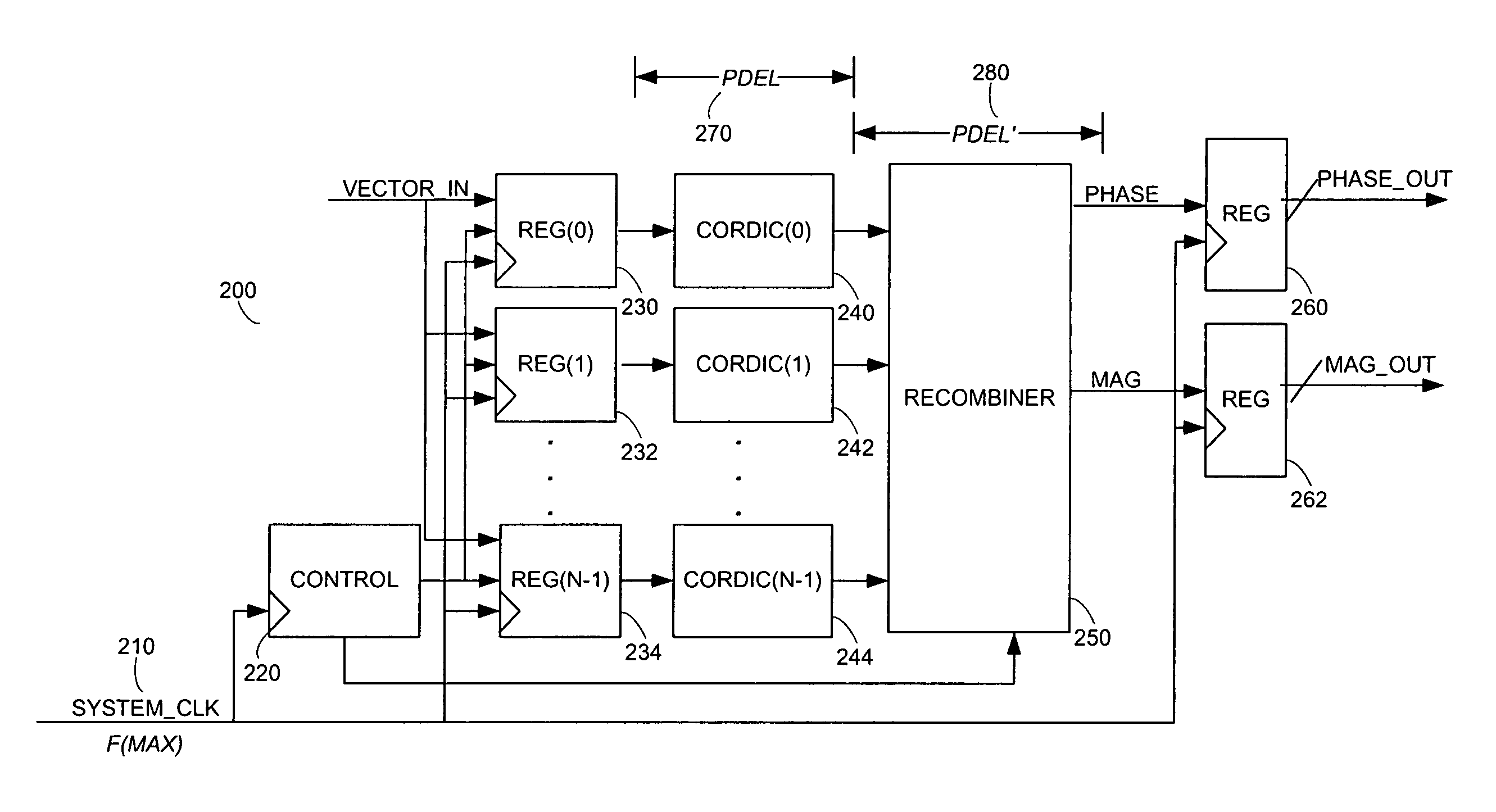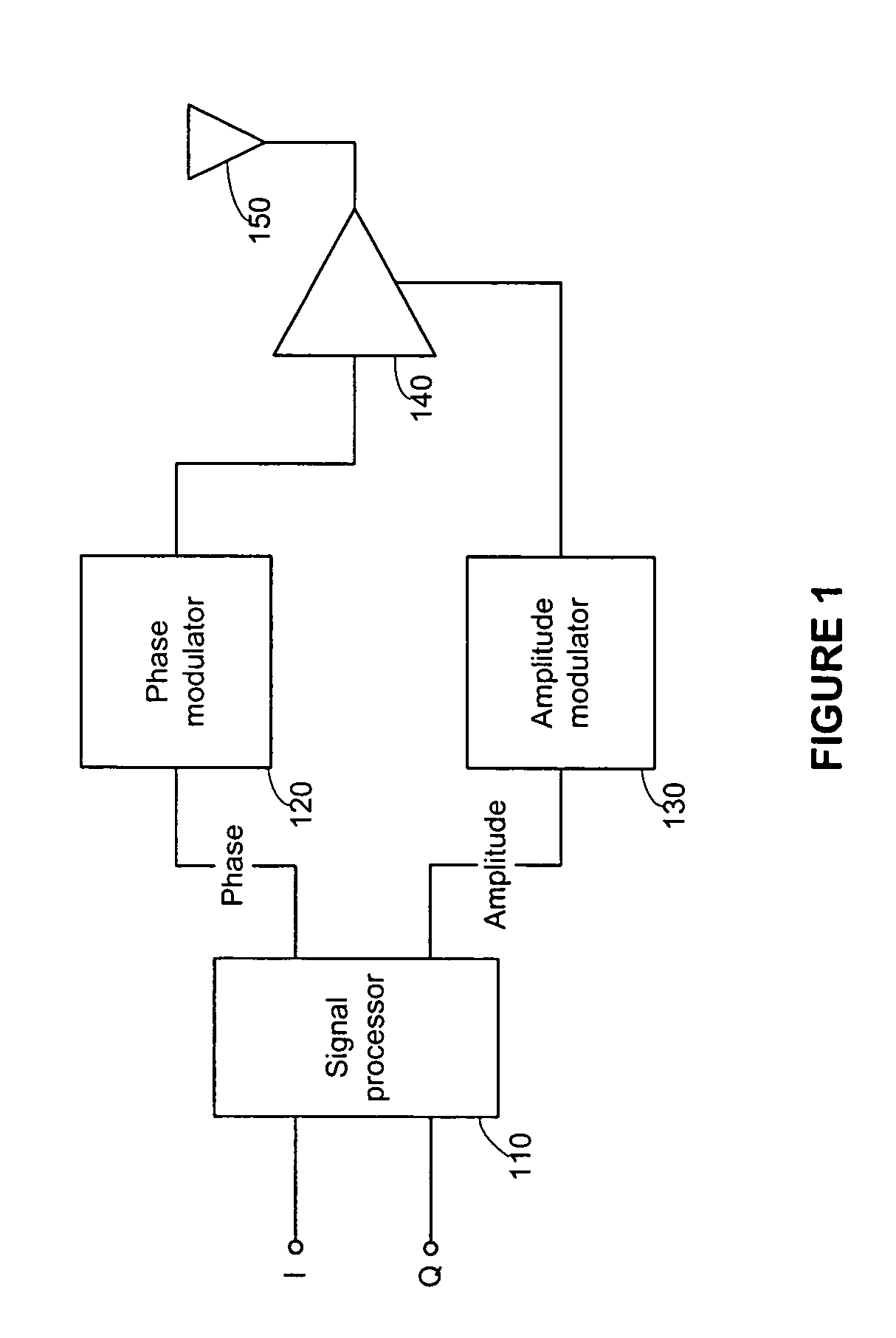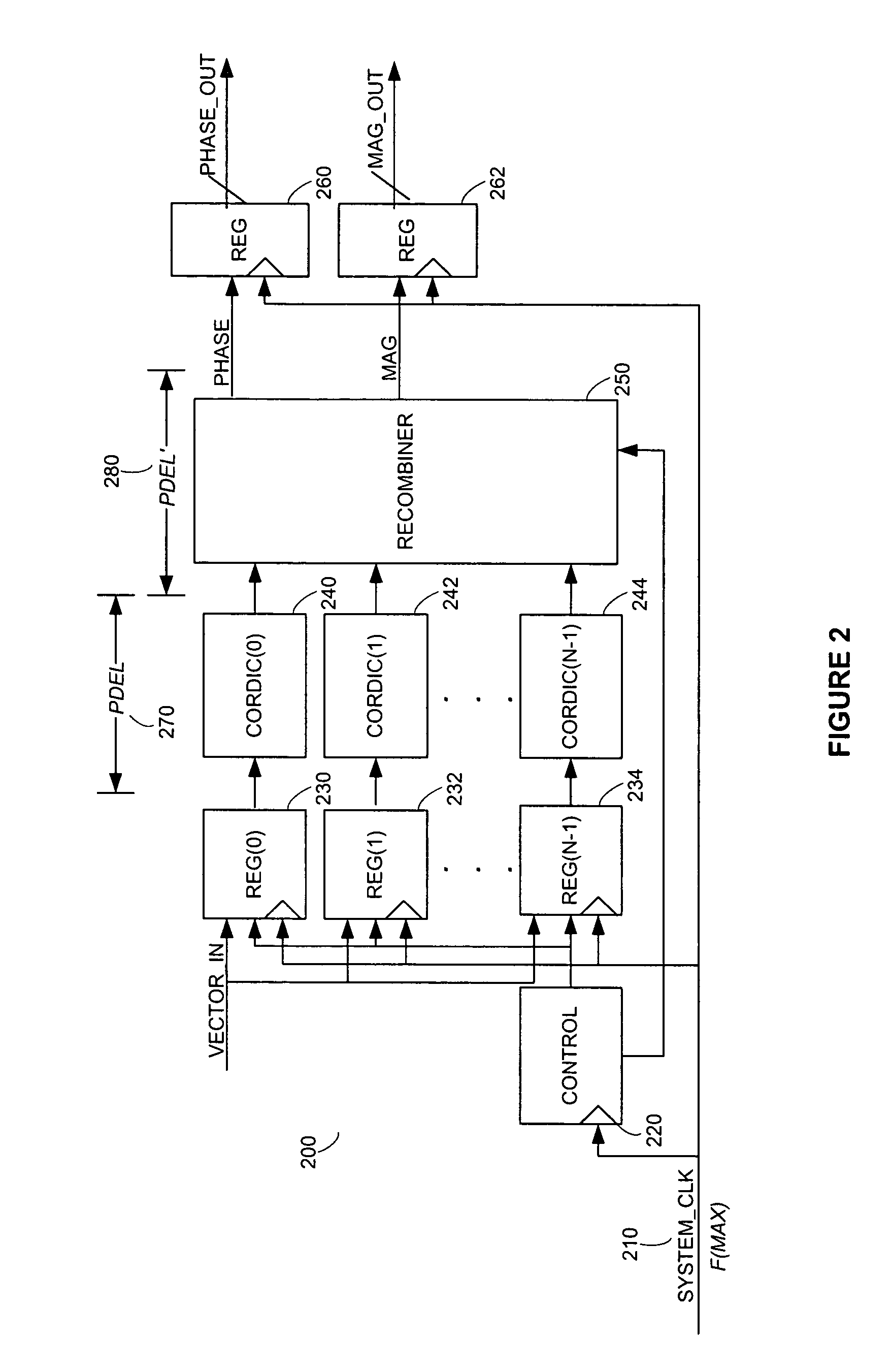System and method for efficient rectangular to polar signal conversion using cordic algorithm
a cordic algorithm and efficient technology, applied in the field of systems and methods for converting, can solve the problems of increasing the propagation delay between receipt, increasing the amount of time required to complete each vector conversion, and increasing the amount of time required for each vector conversion
- Summary
- Abstract
- Description
- Claims
- Application Information
AI Technical Summary
Problems solved by technology
Method used
Image
Examples
Embodiment Construction
[0020] Embodiments of the invention include systems, methods, and articles of manufacture for processing electromagnetic waves and signals. For illustration purposes, an exemplary embodiment comprises a signal processor for converting a sequence of rectangular coordinate input vectors to a sequence of polar coordinate output vectors. The systems and methods described in this application may be implemented in a wide range of applications, such as, for example, a digital signal processor, a baseband processor, a phase, frequency, or amplitude modulator, an amplifier, a transmitter, a receiver, etc. For purposes of illustration, an exemplary transmitter, including a phase modulator according to one aspect of the invention, is illustrated in FIG. 1.
[0021] One example of a transmitter according to one aspect of the invention is illustrated in FIG. 1. The transmitter 100 includes a signal processor 110, a phase modulator 120, an amplitude modulator 130, a power amplifier 140, and an ante...
PUM
 Login to View More
Login to View More Abstract
Description
Claims
Application Information
 Login to View More
Login to View More - R&D
- Intellectual Property
- Life Sciences
- Materials
- Tech Scout
- Unparalleled Data Quality
- Higher Quality Content
- 60% Fewer Hallucinations
Browse by: Latest US Patents, China's latest patents, Technical Efficacy Thesaurus, Application Domain, Technology Topic, Popular Technical Reports.
© 2025 PatSnap. All rights reserved.Legal|Privacy policy|Modern Slavery Act Transparency Statement|Sitemap|About US| Contact US: help@patsnap.com



